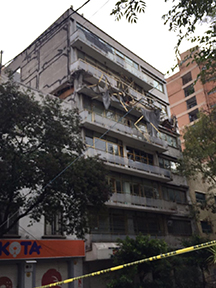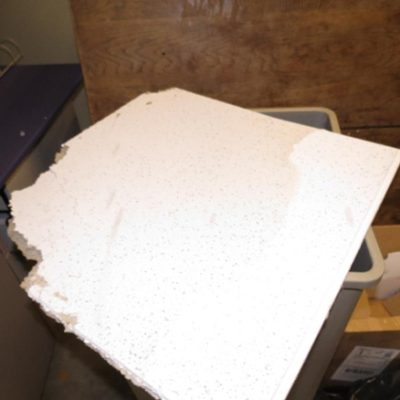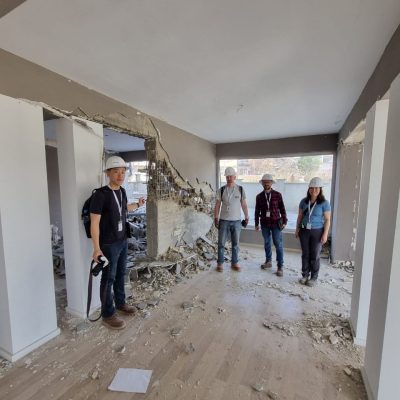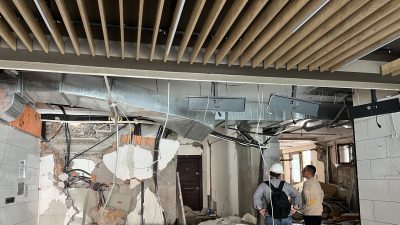Degenkolb explored the streets of Mexico City today visiting a number of building sites. Earthquake damage ranged from complete collapse to only minor cracking. One theme became apparent as we saw more and more damaged buildings. Undersized or altogether missing seismic gaps between adjacent buildings drastically changes the behavior of the buildings. The contact with adjacent buildings introduces additional forces in some cases and in other cases provides unanticipated resistance. In either case it makes understanding the real performance of a single building very difficult without understanding the adjacent buildings.

The photo here shows the taller building with a complete collapse of the 6th floor. The neighboring building experienced minimal damage and extends up a few feet above level 5 of the building on the right. Would this building have formed a collapse mechanism at a lower floor if not for its neighbor? Did the neighboring building add stiffness to the system decreasing the period and increasing forces? Or was there an impact that caused a more sudden deceleration of the building also increasing forces?
The answer is not easy and it depends on not only understanding the building in question but also the neighboring building making our jobs as engineers extremely complex and uncertain. The right thing to do is to have properly sized seismic gaps, but if you don’t you must also understand your neighbors influence on your building.



